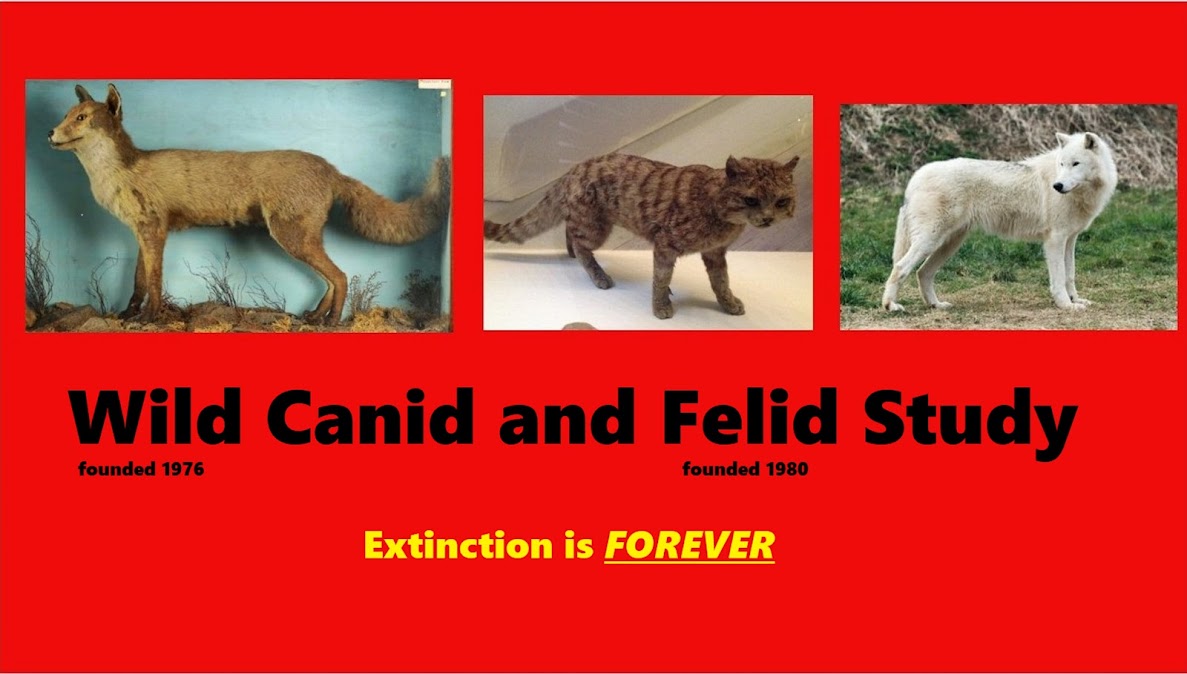In the ongoing research work to look at the felid and canid species we lost in the UK and Europe (the anecdotal evidence seems to indicate that Western parts of Europe had similar Old type foxes and wild cats similar to the UK) The British Fox Study (1976) and Wild Cats and Ferals Study (1980) are combining into the Extinct Fauna Project.
We need the help of private collectors as well as museums with natural history sections. Archivists can also be of great help in that they may have come across old documents that refer to Mountain/Greyhound/Cur and Mastiff foxes including illustrations.
What we are looking for are images of -obviously- taxidermy or skins from 1860 as far back as possible of foxes and wild cats whether from the Netherlands, Germany, France, Belgium and other European countries. As an unfunded Project the ability to visit museums is not possible so we are reliant on interest amongst naturalists and zoologists as well as natural history museum staff.
We know that in the UK the Old foxes and Wild cats became extinct by the 1860s -the same time that hunting also saw other species including the red squirrel become extinct. We can see how the Old and New foxes (imported from Europe in the thousands and as far back as possibly the 16th and 17th centuries) began to mix and possibly interbreed as features seen in red foxes were not seen in Old foxes until hybridisation. By the late 19th century naturalists had officially declared the Scottish wild cat extinct and the Old foxes were also declared extinct. We then see the New types becoming so common that over the years people assumed they were always native.
Looking at images from Medieval European documents as well as the work of Buffon it is clear that the wild cats in Western Europe were slowly replaced by what we see today. However, again, it is just assumed that they always looked like this so what would an investigation of historical records prove? That was exactly my thinking over 40 years ago until I researched.
Similarly we have images that show foxes unlike red foxes today. Just when the red foxes moved into Western Europe is unknown but we believe the move west was gradual aver hundreds of years as they followed human migration and as the Old foxes were hunted and killed opening up territory for the New fox. The same applies for wild cats although hybridisation with domestic or feral domestic cats probably took place over many centuries (as in the UK).
What we need to do, for the UK specifically, is to find samples of Old foxes dated and described as Mountain/Greyhound, Cur or Mastiff and Hill foxes. Those familiar with red foxes will be able to note the differences but if in doubt we can help if photos are provided. There may be many specimens in stately homes as well as private collections in the North of England up to the Scottish Highlands but not exclusively that region.
For wild cats please look at the image in the blog header and that or similar is what we are looking for and another colour phase seems to have been grey. Again if there is any doubt then a photo can help us decide.
This continuation of the work needs the collaboration of many others and if you can help please contact me -email subject Extinct Fauna Project- via email at blacktowercg@hotmail.com
Thank You



.jpg)


.jpg)


.jpg)
.jpg)
.jpg)



.jpg)
.jpg)
.jpg)


.jpg)
.jpg)










.jpg)
.jpg)

.jpg)




















.JPG)



